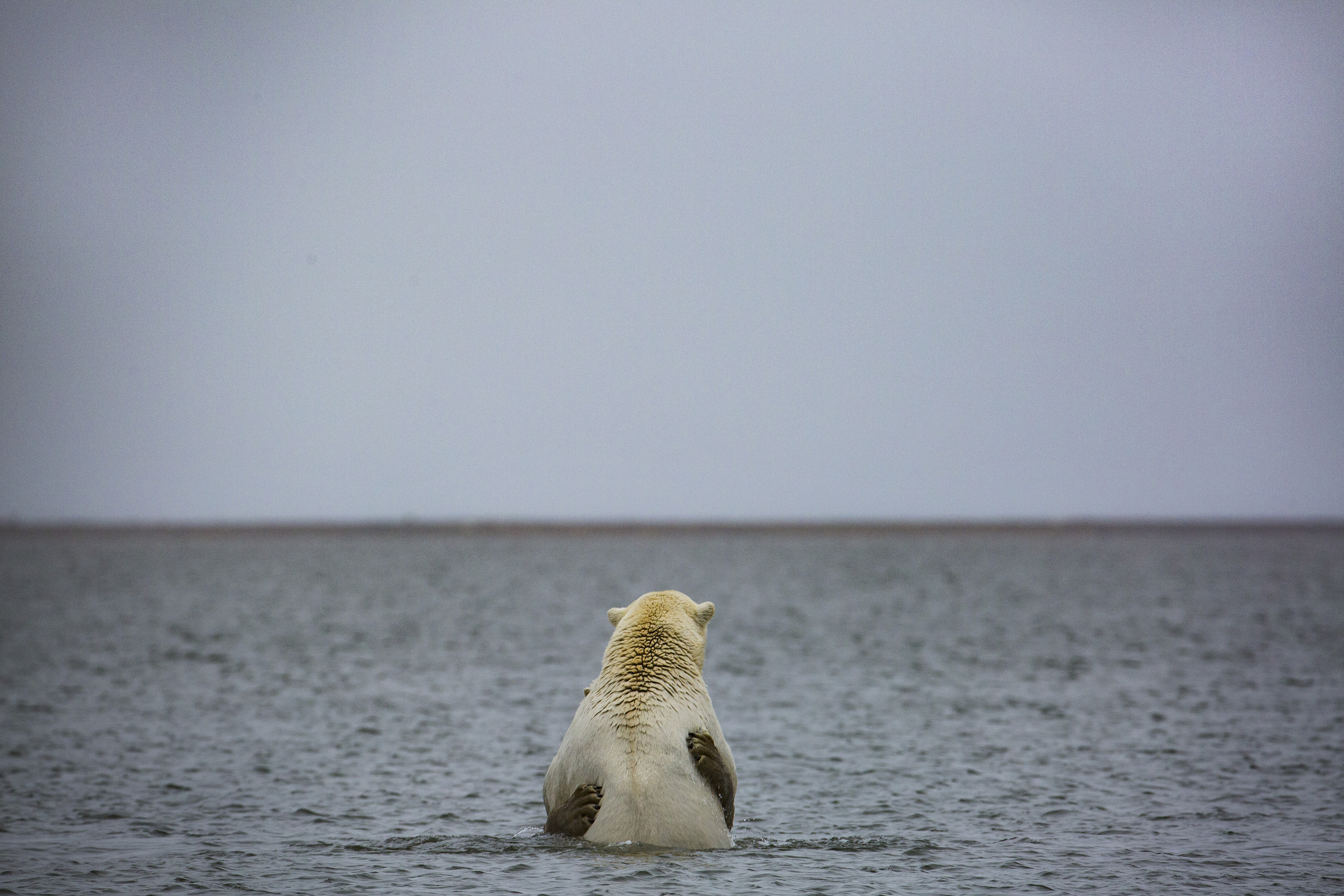Eastern Arctic polar bears are doing OK — for now

Finally, a little good news about polar bears in western Greenland and Canada’s eastern Arctic.
A recent comprehensive three-year scientific study of Canada’s two easternmost polar bear populations shows they are at least stable, and possibly increasing.
Of course, those conclusions come with a number of “buts,” including observations that sea ice is drastically diminishing and likely impacting polar bear health, behavior and habitat in Kane Basin and Baffin Bay.
The new data are contained in a massive final report to the Canada-Greenland Joint Commission on Polar Bear from the commission’s Scientific Working Group, completed in July 2016 and quietly uploaded, without notice, to the Government of Nunavut’s website Feb. 8.
But here’s something you won’t find in the report’s 636 pages: a polar bear quota recommendation.
Although that was one of their stated tasks, scientists from the working group refrained from suggesting a total allowable harvest, or quota, due to a lack of “management objectives” from the committee, among other things.
The report, which you can access in its various parts here, offers results from a 2011 to 2014 multi-level study of Baffin Bay and Kane Basin polar bears and a comparison with data obtained on those same populations from the 1990s.
The recent data were obtained using biopsy darting (shooting darts into bears from helicopters which fall out and contain genetic material for analysis), radio collaring and a collection of samples from hunters in both Greenland and Nunavut.
According to the 2016 report, the Baffin Bay polar bear population, which comprises all of Baffin Bay including Greenland’s western coast and Baffin Island’s east coast, has an estimated 2,826 animals, compared to 2,173 animals estimated in 1994-1997.
But, according to scientists, we shouldn’t get too excited about those numbers.
The report says there was likely an “underabundance” reported in the 1990s and therefore, “it is not possible to conclude that the estimate of total abundance in the 2010s represents an increase in the size of the [Baffin Bay] subpopulation.”
Scientists are a little more confident about the Kane Basin population, located directly north of the Baffin Bay population, just east of Ellesmere Island.
The current estimate for Kane Basin is 357 polar bears, more than double the 164 estimated in 1995-1997.
Despite a re-calculation of that 1990s estimate to 224 polar bears, and a caution that sampling protocols have changed since the 1990s, the findings suggest, “relatively strong evidence for a stable to increasing subpopulation.”
Now for the bad news.
According to sea ice data contained in the report, the length of summer in Baffin Bay — the period between sea ice retreat in spring and sea ice advance in fall — has increased by 12 days per decade since 1979.
Sea ice concentration during the June-to-October months has decreased 4 percent per decade since 1979, the report adds, and ice melt occurs about three to four weeks earlier now than in the 1990s.
This has resulted in significant habitat loss for polar bears, scientists say, and changed how they behave. For example, east Baffin Island bears are more likely to stay on land in summer.
“In the 2000s, polar bears spent significantly more time on land on Baffin Island, and arrival dates on Baffin Island in summer were one month earlier in the 2000s than in the 1990s,” the report says. “The amount of time bears spent on land has increased by 20-30 days since the 1990s.”
Polar bears in Kane Basin are undergoing an even greater habitat change, from a largely year-round ice platform to a cycle more similar to what their southern counterparts experience—sea ice retreat in spring and a complete melt-out in summer.
Despite that, the Kane Basin bears appear to be doing okay. There are several possible reasons for that but one mentioned in the report is a high density of seals and polar bears noted near the Humbolt Glacier in eastern Kane Bay, indicating the region, “has high productivity and is important habitat for polar bears in the subpopulation.”
Polar bear quotas were introduced in Canada in 1967 and in Greenland in 2006.
From 1992 to 2014, the number of polar bears harvested in Baffin Bay by both Canadian and Greenlandic hunters has ranged from a low of 120 in 1993-94 to a high of 268 in 2002-03, for an average of 163 per year.
The current Greenland-Canada total allowable harvest for Baffin Bay polar bears is 132. That quota has declined steadily since 2006, when it was 178 polar bears.
In Kane Basin, the total harvest has ranged from a low of three in 2009-10 to a high of 26 in 2004-05. The total quota currently in place for Kane Basin polar bears is 11 and has remained so since 2008.
But it’s unclear what will happen to the quotas now, in light of this report.
Neither the GN nor Nunavut Tunngavik Inc. responded to requests for information by publication time.
The working group scientists who wrote this current report say past quotas were built upon “predictive modelling,” but that modelling is no longer sufficient.
“The ultimate threat to polar bears throughout their range is the reduction in sea-ice habitat, expanse, duration and quality as a consequence of climate change,” they write.
“Hence, the effective and sound management of polar bears can no longer rely solely on estimates of abundance but must also incorporate impacts of a changing environment.”
The report adds that other threats, including pollution, resource exploration and development, as well as tourism must also be factored in.
And decisions around risk tolerance and management objectives are not for scientists to make; that’s best left to policymakers, they say, in consultation with stakeholders.